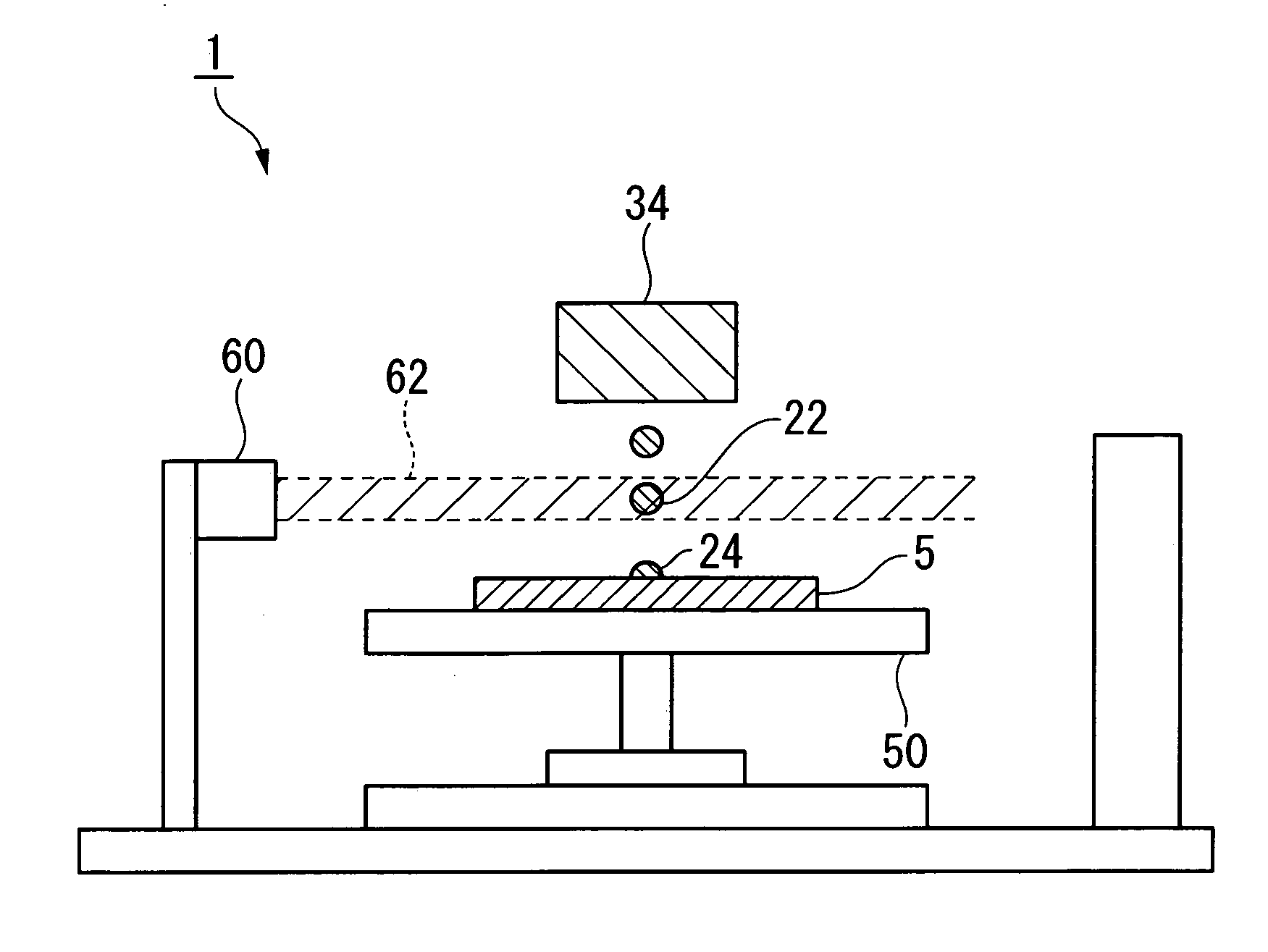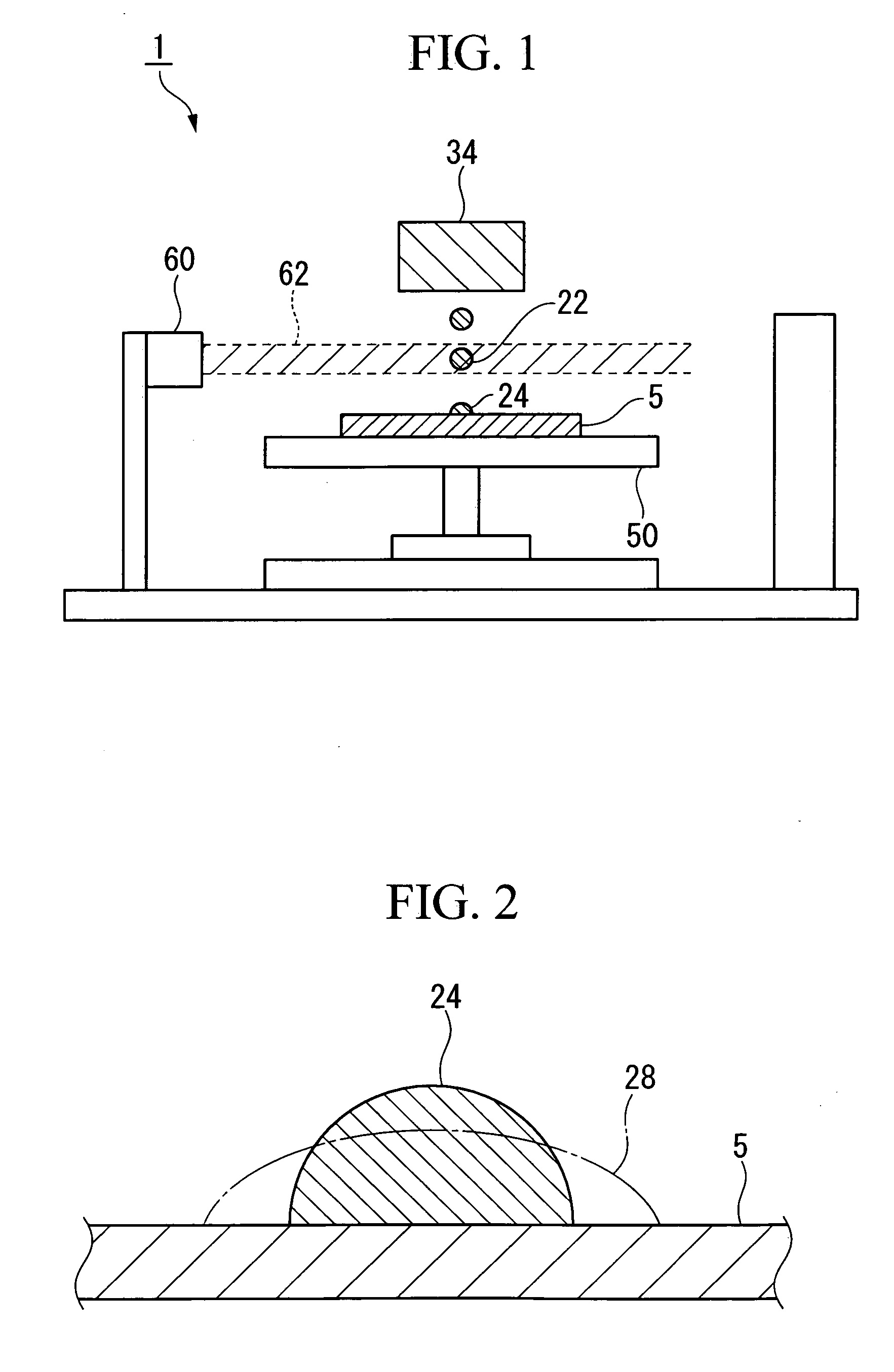Method for manufacturing microlens and apparatus for manufacturing the same
- Summary
- Abstract
- Description
- Claims
- Application Information
AI Technical Summary
Benefits of technology
Problems solved by technology
Method used
Image
Examples
Embodiment Construction
[0024] Hereafter, various embodiments of the present invention will be described with reference to the drawings. In addition, in respective drawings used for the following description, the scale is changed for each member so that each member is of a size which can be depicted in the drawing.
Method for Manufacturing Microlens
[0025]FIG. 1 is a schematic diagram illustrating a method for manufacturing a microlens and an apparatus for manufacturing the same according to this embodiment. In the method for manufacturing a microlens of this embodiment, liquid drops 22 containing a material for forming microlenses are ejected from the liquid drop ejection head 34 to make them land on the substrate 5, and the liquid drops 22 are irradiated with ultraviolet light 62 at least once at a time period between after the ejection of the liquid drops 22 and immediately after landing.
Material for Forming Microlens
[0026] As a material for forming microlenses, an ultraviolet light curable optical ...
PUM
| Property | Measurement | Unit |
|---|---|---|
| Time | aaaaa | aaaaa |
Abstract
Description
Claims
Application Information
 Login to View More
Login to View More - R&D
- Intellectual Property
- Life Sciences
- Materials
- Tech Scout
- Unparalleled Data Quality
- Higher Quality Content
- 60% Fewer Hallucinations
Browse by: Latest US Patents, China's latest patents, Technical Efficacy Thesaurus, Application Domain, Technology Topic, Popular Technical Reports.
© 2025 PatSnap. All rights reserved.Legal|Privacy policy|Modern Slavery Act Transparency Statement|Sitemap|About US| Contact US: help@patsnap.com



